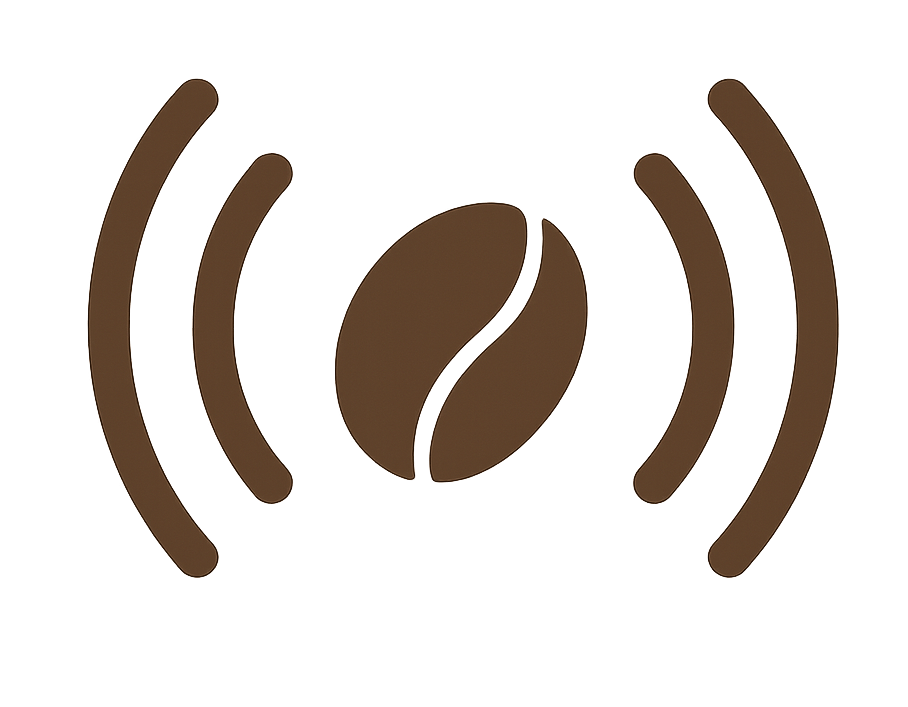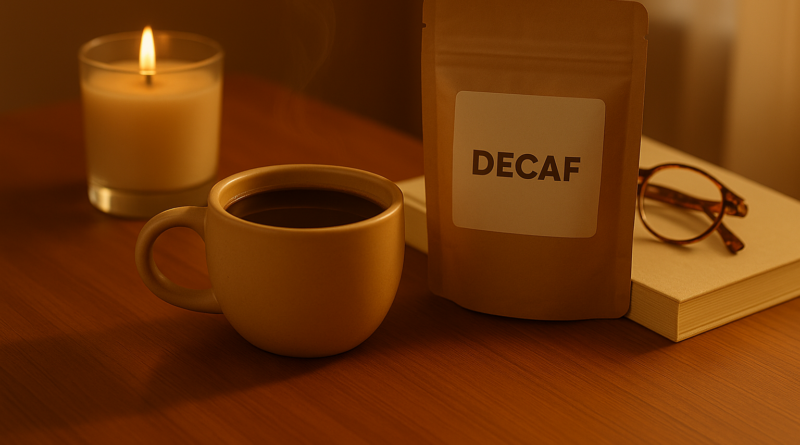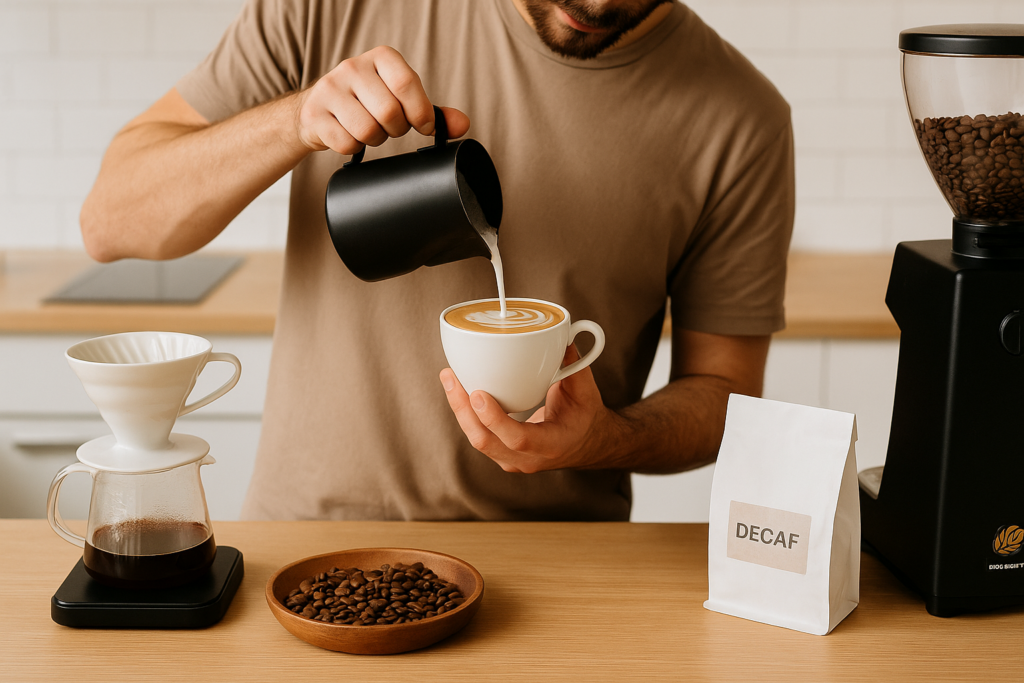Decaf Coffee Benefits: The Surprising Reasons Behind Its Growing Popularity
Decaf Is Not What It Used to Be
Not so long ago, decaf had a bit of an image problem. It was seen as a second-rate choice—something you’d order only if you had to. Watery taste, dull aroma, and a vague feeling that it wasn’t “real coffee.” But that reputation is quickly fading. With a wave of innovation in the coffee world, decaf has quietly rebranded itself into something surprisingly modern, flavorful, and functional.
Thanks to improved decaffeination methods—like the Swiss Water Process and carbon dioxide extraction—coffee can now lose the caffeine without sacrificing its soul. These techniques gently remove the stimulant while preserving the rich flavor notes we love. The result? A cup that tastes remarkably close to its fully caffeinated sibling, but without the side effects. If you’re curious how exactly the process works or why some decafs still carry subtle taste differences, we break it down in Decaf Coffee Explained: How It’s Made and How It Affects Flavor Profiles.
Better Sleep, Less Jitters: Why People Are Switching
Those side effects are precisely why more and more people are giving decaf a second look. For anyone who’s experienced jitters, racing thoughts, or disrupted sleep from one too many cups, decaf feels like a small revolution. It allows you to keep your ritual—the comfort of holding a warm mug, the pleasure of aroma and taste—without the post-coffee crash. Whether you’re dealing with caffeine sensitivity, managing stress, or simply want a calmer evening, decaf fits into your lifestyle with surprising ease.
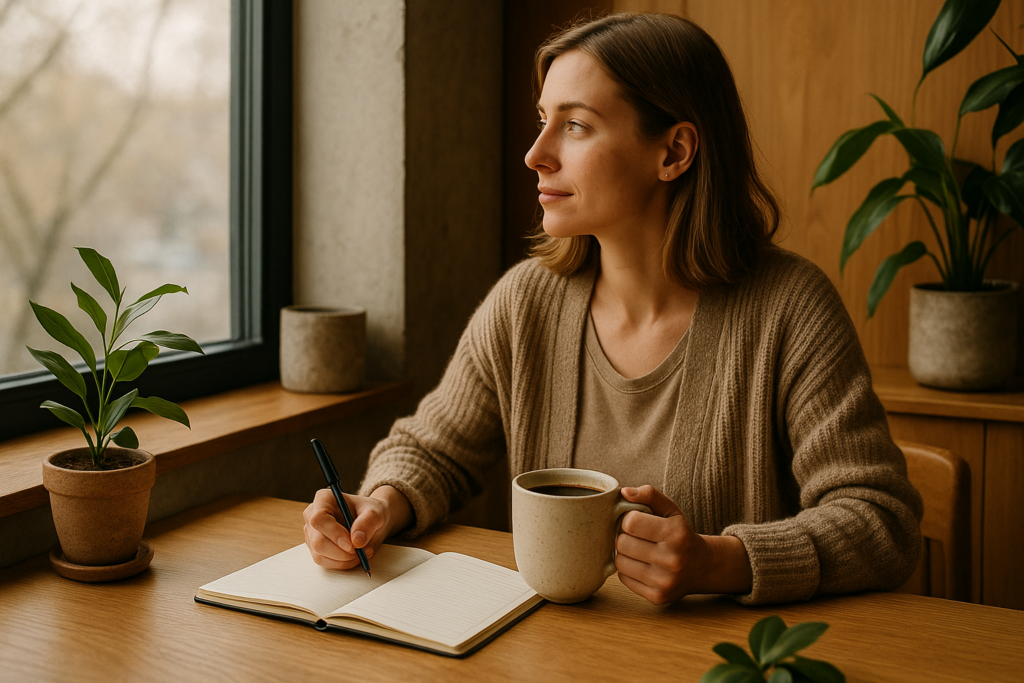
Interestingly, the reasons people reach for decaf today are more diverse than ever. It’s not just about avoiding caffeine. Pregnant women, people recovering from burnout, those exploring gentler morning routines, and even wellness-focused professionals are weaving decaf into their days. For some, it’s a way to reduce anxiety. For others, it’s about supporting adrenal balance or simply enjoying coffee at night without the consequences.
You Still Get the Antioxidants – Without the Buzz
But there’s more to it than just avoiding stimulation. What many don’t realize is that decaf still delivers a powerful dose of antioxidants. The decaffeination process affects caffeine, not the good stuff. That means you’re still getting those beneficial plant compounds found in regular coffee—like polyphenols and chlorogenic acids—that are linked to reduced inflammation, better brain function, and more stable energy over time. Choosing decaf doesn’t mean giving up on coffee’s health benefits. It simply means you’re choosing a gentler version of the same wellness-friendly beverage.
A Smart Choice for Afternoon and Evening Coffee Lovers
These changes in how decaf is made—and how it’s perceived—are now shaping when and how people drink it. Decaf is no longer reserved for the caffeine-sensitive. It’s becoming the go-to cup for afternoons and evenings, when you want the flavor and comfort of coffee without worrying about being wide awake at midnight. It’s the cup you can enjoy after dinner, during late-night work sessions, or even as a second or third coffee of the day when you’ve already hit your caffeine limit.
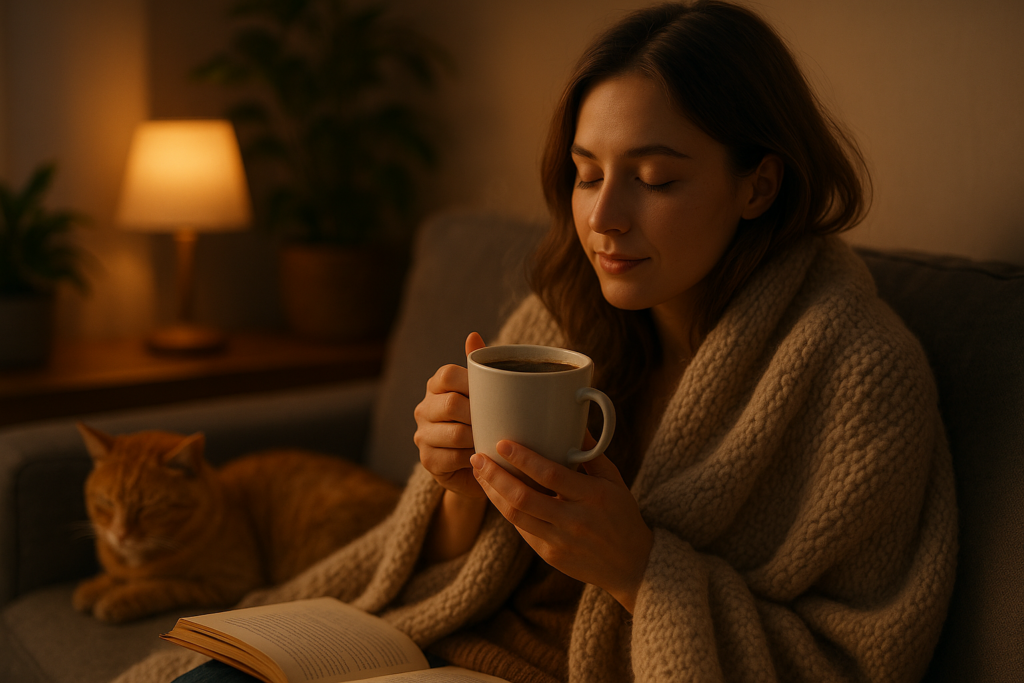
This also makes decaf perfect for creating new rituals. Many people now pair their decaf with adaptogens or nut milks to create calming evening drinks that look and feel just like specialty lattes—without sabotaging their sleep. Others sip decaf with dark chocolate or dessert, turning what used to be a limiting option into a small moment of indulgence. It’s not a backup plan. It’s a conscious part of a better daily rhythm.
It’s Gaining Ground in the Specialty Coffee World
Perhaps one of the most surprising shifts around decaf is happening in the specialty coffee scene. What used to be an afterthought is now getting real attention from high-end roasters and baristas. More and more specialty brands are offering decaf options that go through the same level of sourcing, roasting, and quality control as their fully caffeinated counterparts.
That means single-origin decafs with distinct flavor profiles, carefully handled beans, and transparent processing methods. It’s not uncommon to find decaf offerings that highlight notes of dark chocolate, stone fruit, or caramel—flavors that used to be muted or muddled in older decaf versions. Some roasters even label their decaf as “third wave decaf,” a term that signals it belongs to the same movement that brought us pour-overs, micro-lots, and farm-to-cup transparency.
As demand grows, so does the variety. Decaf no longer sits in the corner of the shelf with a single vague “medium roast.” It’s now part of curated tasting flights, coffee subscription boxes, and even barista competitions. Slowly but surely, decaf is shedding its outdated label and stepping confidently into the craft coffee conversation.
The Bottom Line: Decaf Is a Functional, Feel-Good Option
In the end, the rise of decaf is about more than avoiding caffeine. It’s about reclaiming coffee as a ritual that fits your day—not disrupts it. Whether it’s about sleeping better, managing anxiety, or simply enjoying a smooth cup without the spike, decaf offers an easy, thoughtful alternative.
It aligns with a broader shift toward functional beverages—drinks that do more than quench thirst. Decaf gives you the comfort, the taste, and the wellness benefits of coffee, minus the overstimulation. It fits neatly into the rhythm of mindful routines, from a calming morning moment to a post-dinner wind-down.
The surprising truth? More people are choosing decaf not because they have to, but because they want to. And that might be the most exciting shift of all.
